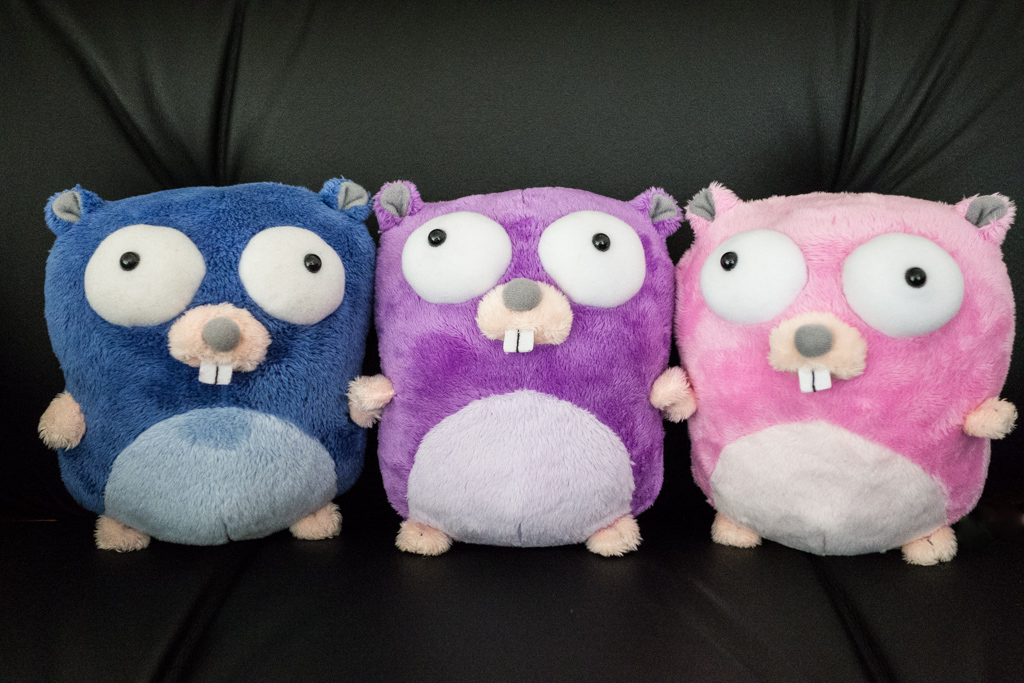Simplicity is Complicated
dotGo
9 Nov 2015
Rob Pike
dotGo
9 Nov 2015
Rob Pike

What makes Go successful?
Many reasons cited:
These are not language features.
Less often cited: true language features such as interfaces or concurrency.
All are important but not really an answer.
3My answer: Simplicity.
Go is simple, at least compared to established languages.
Simplicity has many facets.
Simplicity is complicated.
4Attended Lang.Next conference last year (2014).
Heard talks about new versions of Java, JavaScript (ECMAScript), Typescript, C#, C++, Hack (PHP), and more.
These languages actively borrow features from one another.
They are converging into a single huge language.
5Sapir-Whorf hypothesis: Language influences thought.
Controversial with regard to human languages.
Close to a fact for computer languages. Consider:
Like disciplines in mathematics.
6If the languages all converge, we will all think the same.
But different ways of thinking are good.
Need different languages for different problems.
We don't want just one tool, we want a set of tools, each best at one task.
7The talks at Lang.Next were about new language versions (Java 8, ECMAScript 6, C#, C++14) and were lists of features.
These languages evolve and compete by adding features.
The languages grow in complexity while becoming more similar.
Bloat without distinction.
8Go is different.
Go does not try to be like the other languages.
Go does not compete on features.
As of Go 1, the language is fixed.
Many newcomers to Go ask for features from languages they know.
But those features do not belong in Go—and the language is fixed.
Adding features to Go would not make it better, just bigger.
That would make Go less interesting by being less different.
9Of course, there must be some features.
But which ones? The right ones!
Design by consensus.
10
If a language has too many features, you waste time choosing which ones to use.
Then implement, refine, possibly rethink and redo.
Later, "Why does the code work this way?"
The code is harder to understand simply because it is using a more complex language.
Preferable to have just one way, or at least fewer, simpler ways.
Features add complexity. We want simplicity.
Features hurt readability. We want readability.
Readability is paramount.
11Readable code is reliable code.
It's easier to understand.
It's easier to work on.
If it breaks, it's easier to fix.
If the language is complicated:
A key tradeoff: More fun to write, or less work to maintain?
12Features are often suggested to aid "expressiveness".
Conciseness can be expressive but not always readable.
(Consider APL: ⊃ 1 ω ∨ . ∧ 3 4 = +/ +⌿ 1 0 ‾1 ∘.θ 1 - ‾1 Φ″ ⊂ ω)
Can also be expensive, implementing simple ideas with too-powerful primitives.
Performance can also be unpredictable.
On the other hand, verbosity can inhibit readability by obscuring the intent.
Build on, but do not be limited by, familiar ideas.
Be concise while remaining expressive.
13Not features for features' sake.
Features that "cover the space", like a vector basis covering solution space.
Orthogonal features that interact predictably.
Simple features that interact in simple ways.
Simplicity comes from orthogonality and predictability.
Keep the language's goals in mind.
14Clean procedural language designed for scalable cloud software.
Composable distinct elements, including:
Plus: Good tools, fast builds.
All the pieces feel simple in practice.
15
They add complexity without clarity.

Go is actually complex, but it feels simple.
Interacting elements must mesh seamlessly, without surprises.
Requires a lot of design, implementation work, refinement.
Simplicity is the art of hiding complexity.
18Each hides complexity behind a simple facade.
19Perhaps the best example of simplicity hiding complexity.
Very difficult to implement well, but worth it.
Yet so simple the language specification mentions it only in the introduction.
Nonetheless, parts of the language strongly influenced by it.
Code is simpler because GC is there.
Design does not need to include "ownership".
Go: there is no free. There is only garbage collection.
As simple as it can be. (But complex behind the facade.)
Concurrency is the ability to write your program as independently executing pieces.
In Go, concurrency has three elements:
select (coordination)Let's talk about goroutines.
21
Start a goroutine with the go keyword:
go function(args)
Three extra keystrokes ('g', 'o', ' '). Hard to be much simpler.
Like garbage collection, eliminate considerations from the programmer's concern:
These are things other systems would provide. Go instead has a minimalist design.
Implementation complex, dependent on garbage collection for stack management.
22In Go, constants are just numbers, even though (because) it is strongly typed.
var nanosecond = time.Second/1e9
Simple idea took about a year to work out. Difficulties:
i := 2; f := 2.0; g := 1/2; h := 1/2.0)// +build ignore,OMIT
package main
import "fmt"
func main() {
fmt.Printf("%T %T", 2.0, 2.0<<0)
}
Still not totally satisfied, but the effect is that constants feel like numbers, contribute to the ease of using Go. But complicated behind the scenes.
More at this blog post.
23Just a set of methods. No data. Simple idea, but more complex than expected.
type Reader interface {
Read([]byte) (int, error)
}
Also need variables of that type (var reader io.Reader).
These variables add dynamic typing to a statically typed language.
var r Reader = os.Stdin // Statically checked.
var x interface{} = os.Stdin // Statically checked.
r = x.(Reader) // Dynamically checked. Must be explicit here - design decision.Requires careful design. Interface assignment must be implemented at run time (not a v-table). What if it fails? Led to type assertions and the "comma, ok" idiom.
More complexity crept in. Type assertions and type switches were not in the original plan.
24Go's most distinctive and powerful feature.
Profound effect on library design.
Enables true component architectures. Prime examples are io.Reader and io.Writer, generalizations of the Unix pipe idea.
Feel simple, worth the complexity.
25A design for structuring programs and libraries.
package big ... import "math/big"
Took a long time to design. Enable componentization, scalability, sharing, data hiding and isolation, ...
Affect program design, syntax, naming, building, linking, testing, ...
Separation of package path ("math/big") from package name (big).
Enabled the go get mechanism.
Intricate to implement yet natural to use.
After garbage collection, perhaps the highest ratio of true complexity to apparent simplicity, and therefore of the power of simplicity to hide complexity.
26package main import ( "fmt" "log" "net/http" ) func こんにちは_Gophers(w http.ResponseWriter, req *http.Request) { fmt.Fprintf(w, "こんにちは Gophers!\n") } func main() { http.HandleFunc("/", こんにちは_Gophers) err := http.ListenAndServe("localhost:12345", nil) if err != nil { log.Fatal("ListenAndServe: ", err) } }
Unicode and UTF-8 handled seamlessly.
Packages imported and used easily.
Fprintf direct to network connection.
Function promoted to method (HandleFunc).
Truly concurrent—server won't block.
Production ready.
All very simple.
28Simplicity is complicated but the clarity is worth the fight.

Simplicity is hard—to design.
Simplicity is complicated—to build.
But if you get it right...
Simplicity is easy—to use.
The success of Go proves it.

dotGo
9 Nov 2015